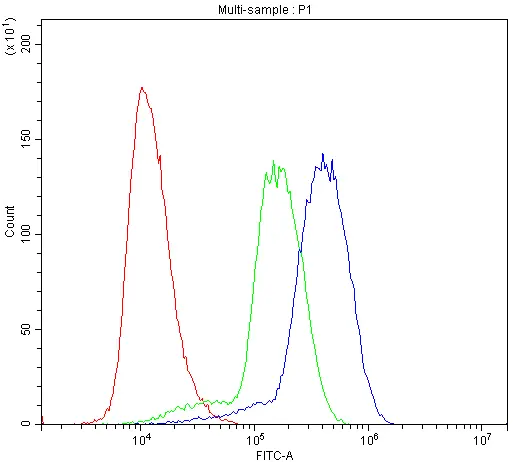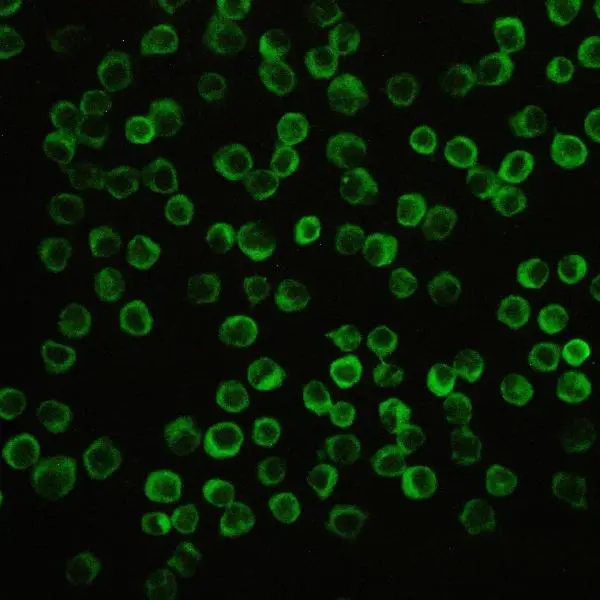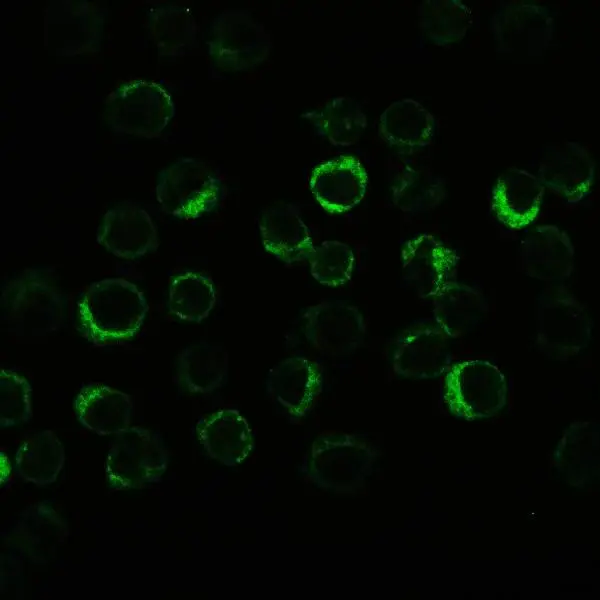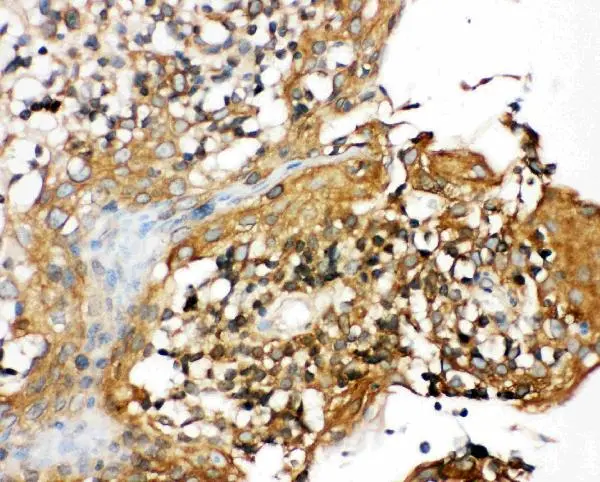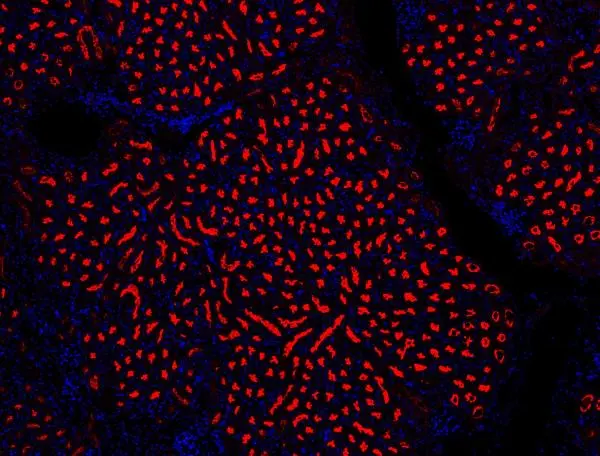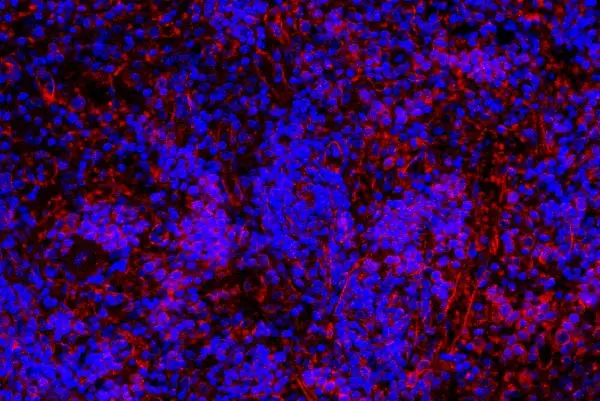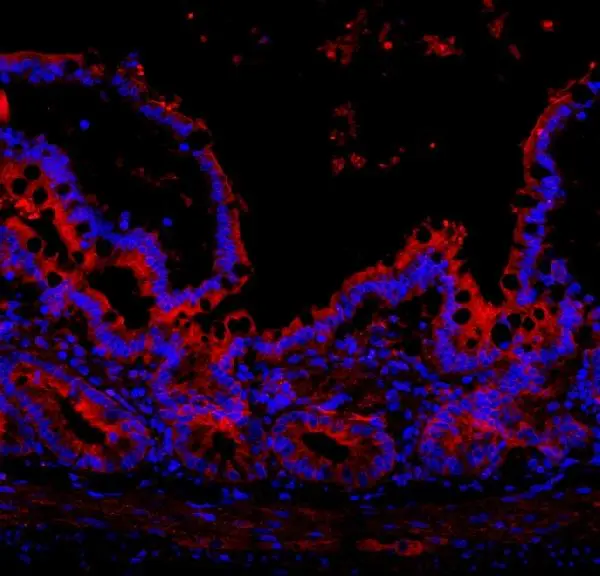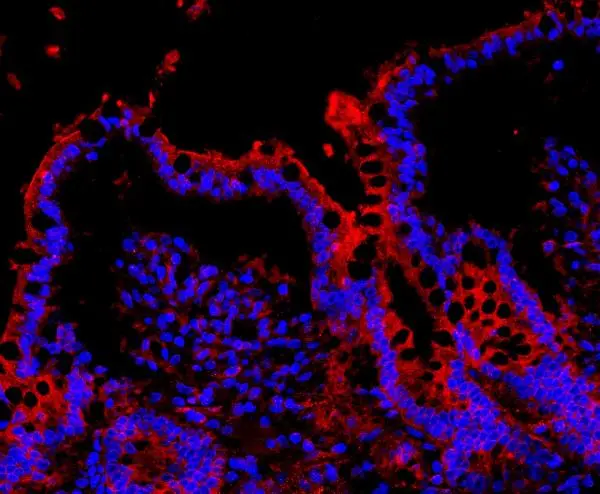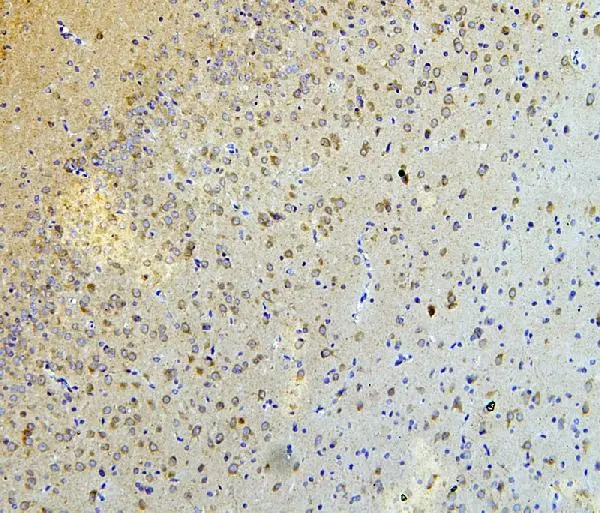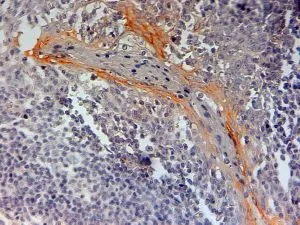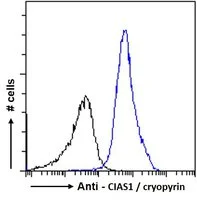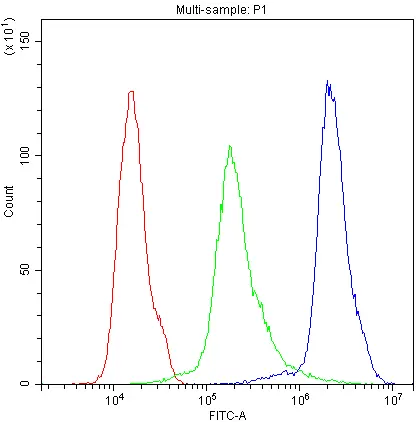
FACS analysis of THP-1 cells using GTX00763 NLRP3 antibody. Blue : Primary antibody Green : Isotype control Red : Blank control Antibody amount : 1microg/1x10? cells
NLRP3 antibody
GTX00763
ApplicationsFlow Cytometry, ImmunoFluorescence, Western Blot, ImmunoCytoChemistry, ImmunoHistoChemistry, ImmunoHistoChemistry Paraffin
Product group Antibodies
TargetNLRP3
Overview
- SupplierGeneTex
- Product NameNLRP3 antibody
- Delivery Days Customer9
- Application Supplier NoteWB: 0.1-0.5microg/ml. ICC/IF: 2microg/ml. IHC-P: 0.5-1microg/ml. FACS: 1-3microg/1x106 cells. *Optimal dilutions/concentrations should be determined by the researcher.Not tested in other applications.
- ApplicationsFlow Cytometry, ImmunoFluorescence, Western Blot, ImmunoCytoChemistry, ImmunoHistoChemistry, ImmunoHistoChemistry Paraffin
- CertificationResearch Use Only
- ClonalityPolyclonal
- Concentration0.5 mg/ml
- ConjugateUnconjugated
- Gene ID114548
- Target nameNLRP3
- Target descriptionNLR family pyrin domain containing 3
- Target synonymsAGTAVPRL, AII, AVP, C1orf7, CIAS1, CLR1.1, DFNA34, FCAS, FCAS1, FCU, KEFH, MWS, NALP3, PYPAF1, NACHT, LRR and PYD domains-containing protein 3, NACHT domain-, leucine-rich repeat-, and PYD-containing protein 3, NACHT, LRR and PYD containing protein 3, PYRIN-containing APAF1-like protein 1, caterpiller protein 1.1, cold autoinflammatory syndrome 1 protein, cold-induced autoinflammatory syndrome 1 protein, cryopyrin, cryopyrin, NACHT, LRR and PYD domains - containing protein 3, deafness, autosomal dominant 34, nucleotide-binding oligomerization domain, leucine rich repeat and pyrin domain containing 3
- HostRabbit
- IsotypeIgG
- Protein IDQ96P20
- Protein NameNACHT, LRR and PYD domains-containing protein 3
- Scientific DescriptionThis gene encodes a pyrin-like protein containing a pyrin domain, a nucleotide-binding site (NBS) domain, and a leucine-rich repeat (LRR) motif. This protein interacts with the apoptosis-associated speck-like protein PYCARD/ASC, which contains a caspase recruitment domain, and is a member of the NALP3 inflammasome complex. This complex functions as an upstream activator of NF-kappaB signaling, and it plays a role in the regulation of inflammation, the immune response, and apoptosis. Mutations in this gene are associated with familial cold autoinflammatory syndrome (FCAS), Muckle-Wells syndrome (MWS), chronic infantile neurological cutaneous and articular (CINCA) syndrome, and neonatal-onset multisystem inflammatory disease (NOMID). Multiple alternatively spliced transcript variants encoding distinct isoforms have been identified for this gene. Alternative 5 UTR structures are suggested by available data; however, insufficient evidence is available to determine if all of the represented 5 UTR splice patterns are biologically valid. [provided by RefSeq, Oct 2008]
- Storage Instruction-20°C or -80°C,2°C to 8°C
- UNSPSC12352203
References
- Lou Q, Pan L, Xiang S, et al. Suppression of NLRP3/Caspase-1/GSDMD Mediated Corneal Epithelium Pyroptosis Using Melatonin-Loaded Liposomes to Inhibit Benzalkonium Chloride-Induced Dry Eye Disease. Int J Nanomedicine. 2023,18:2447-2463. doi: 10.2147/IJN.S403337Read this paper
- Arab HH, Abd El Aal HA, Alsufyani SE, et al. Topiramate Reprofiling for the Attenuation of Cadmium-Induced Testicular Impairment in Rats: Role of NLRP3 Inflammasome and AMPK/mTOR-Linked Autophagy. Pharmaceuticals (Basel). 2022,15(11). doi: 10.3390/ph15111402Read this paper
- Lo J, Liu CC, Li YS, et al. Punicalagin Attenuates LPS-Induced Inflammation and ROS Production in Microglia by Inhibiting the MAPK/NF-κB Signaling Pathway and NLRP3 Inflammasome Activation. J Inflamm Res. 2022,15:5347-5359. doi: 10.2147/JIR.S372773Read this paper
- Arab HH, Elhemiely AA, El-Sheikh AAK, et al. Repositioning Linagliptin for the Mitigation of Cadmium-Induced Testicular Dysfunction in Rats: Targeting HMGB1/TLR4/NLRP3 Axis and Autophagy. Pharmaceuticals (Basel). 2022,15(7). doi: 10.3390/ph15070852Read this paper
- Clough E, Inigo J, Chandra D, et al. Mitochondrial Dynamics in SARS-COV2 Spike Protein Treated Human Microglia: Implications for Neuro-COVID. J Neuroimmune Pharmacol. 2021,16(4):770-784. doi: 10.1007/s11481-021-10015-6Read this paper

